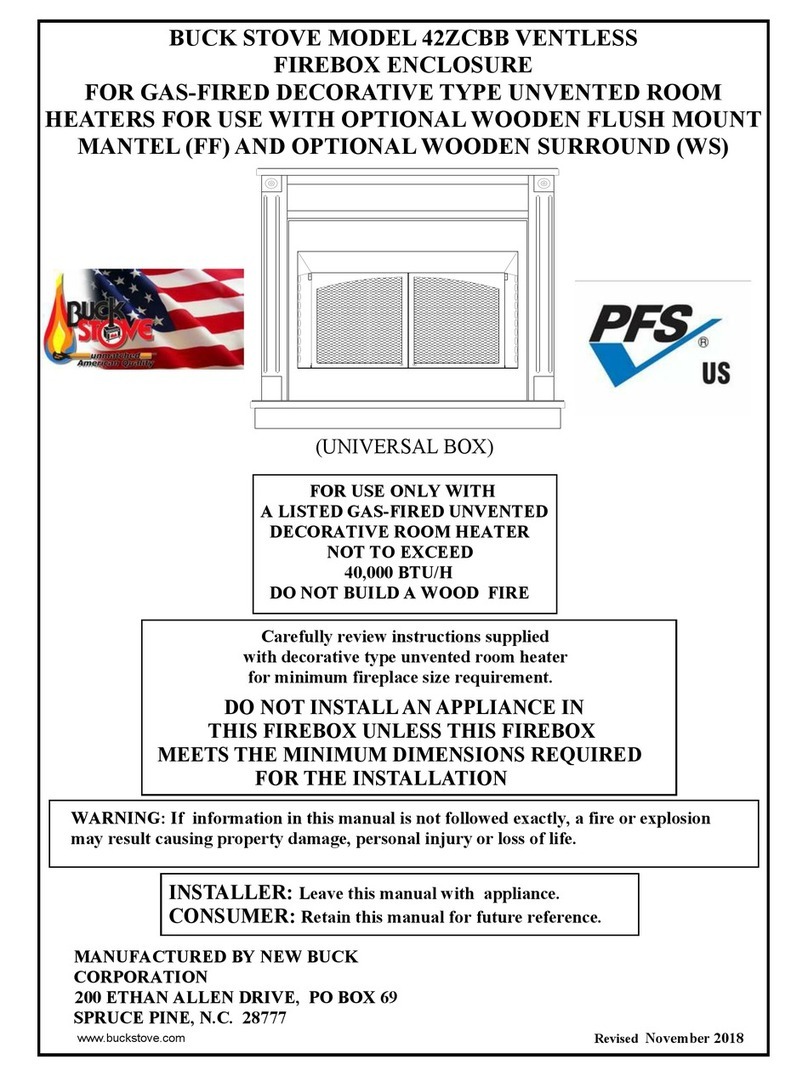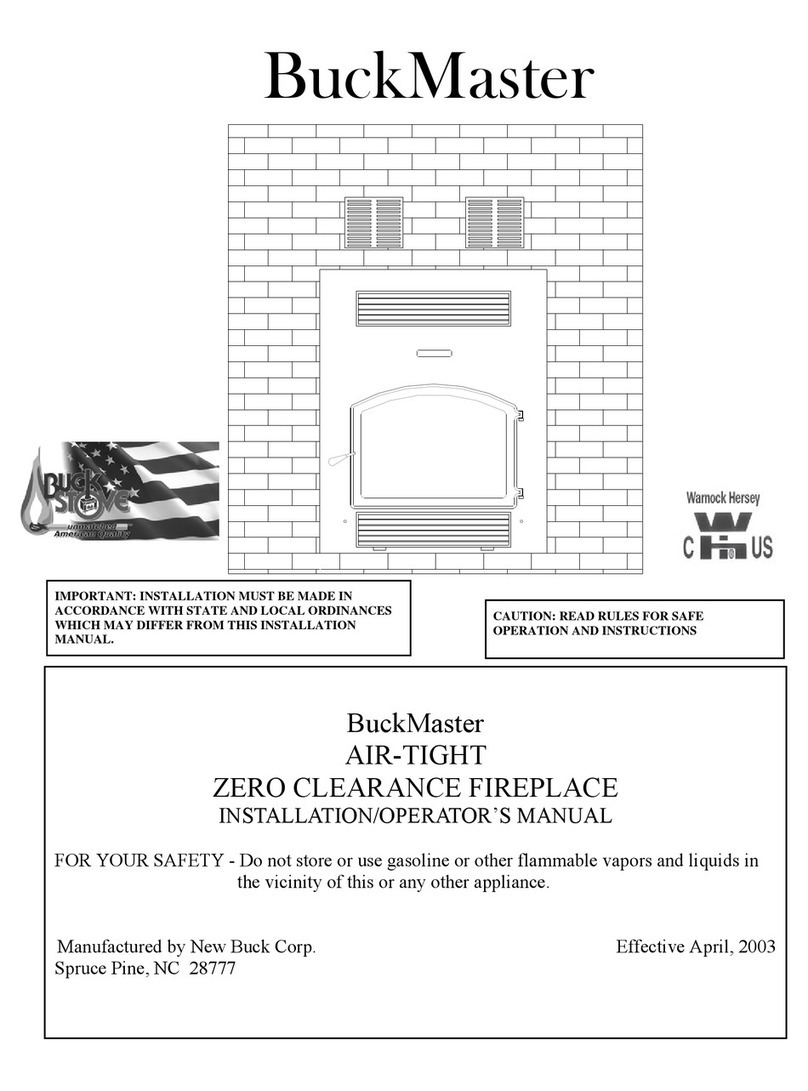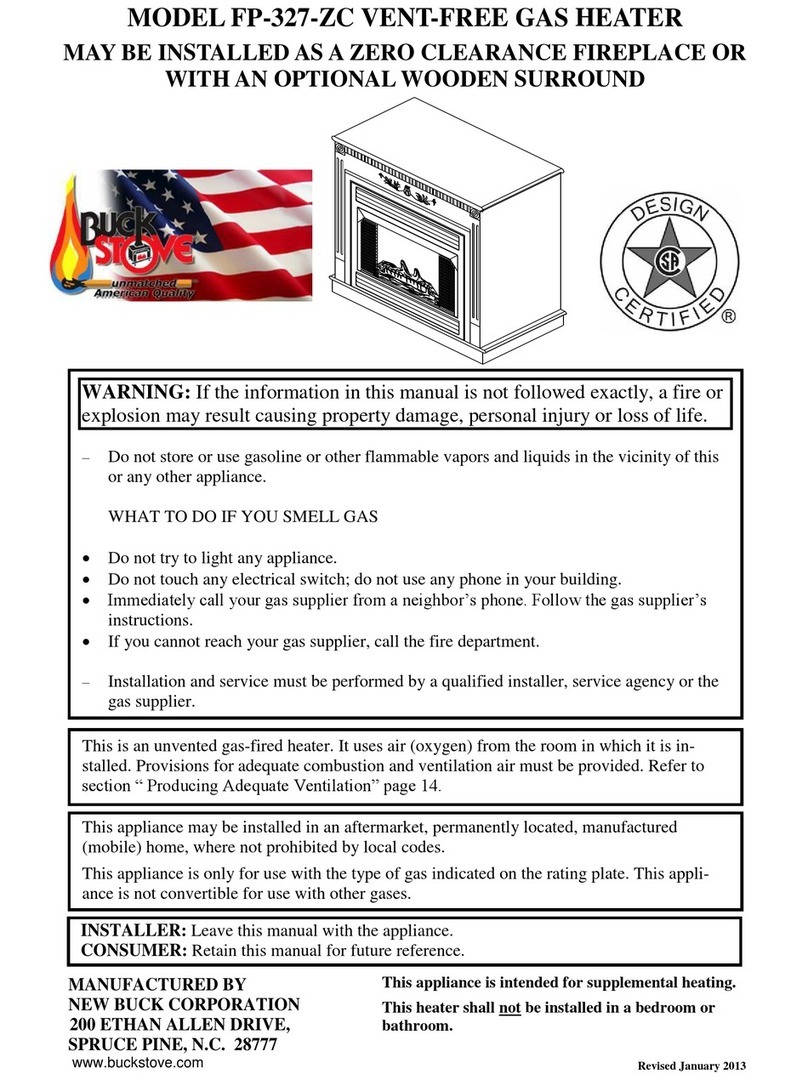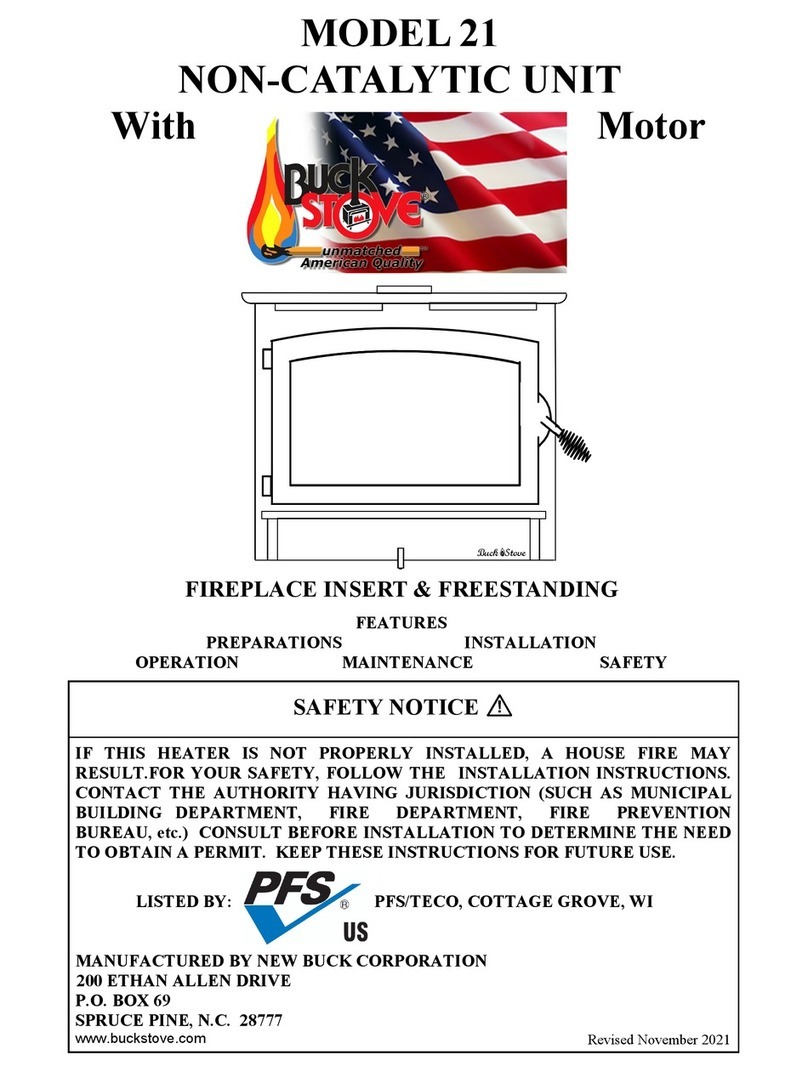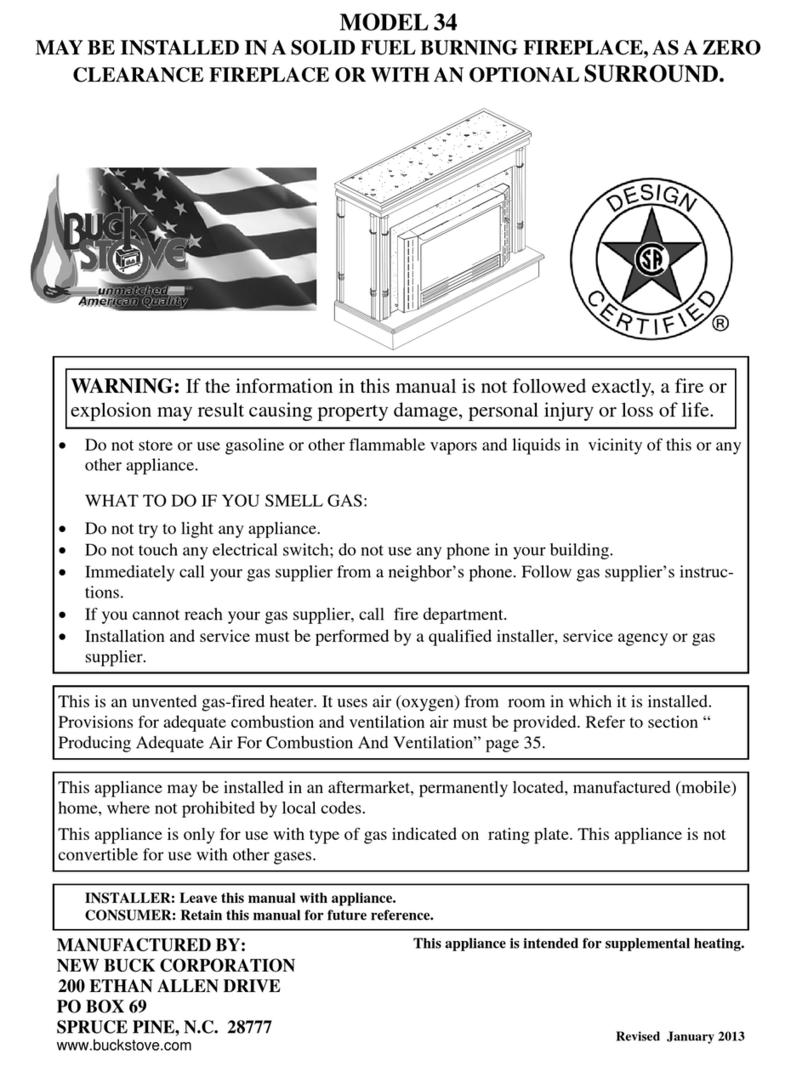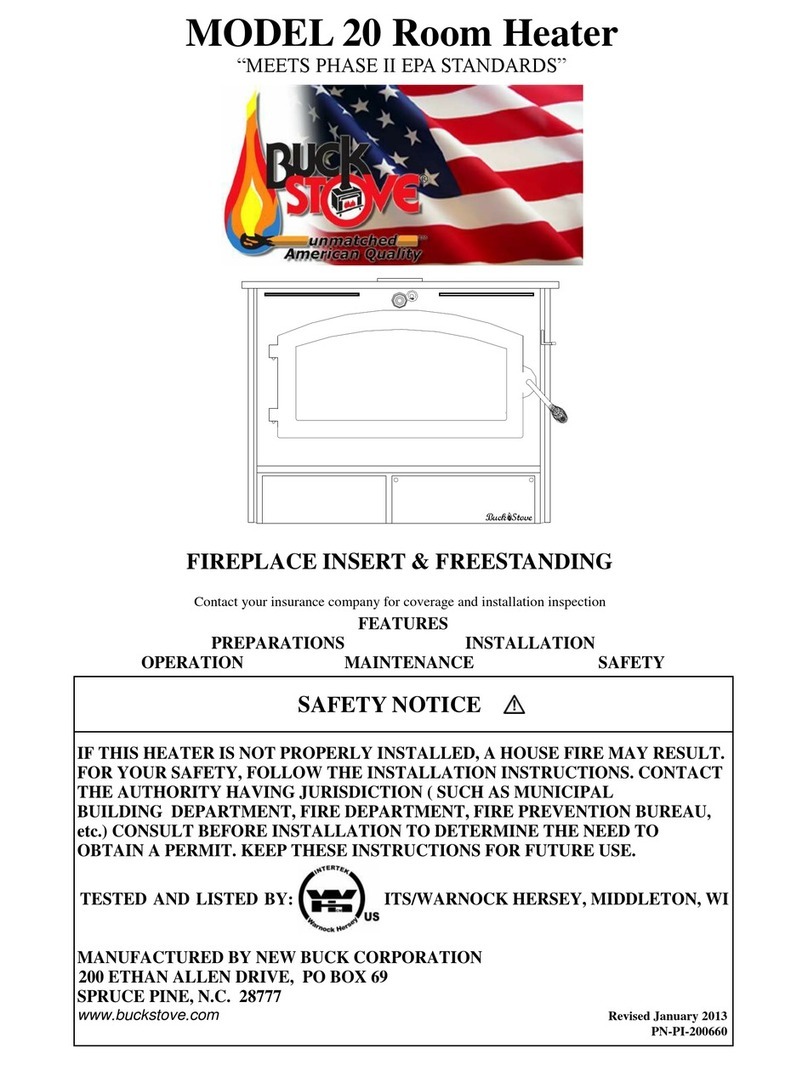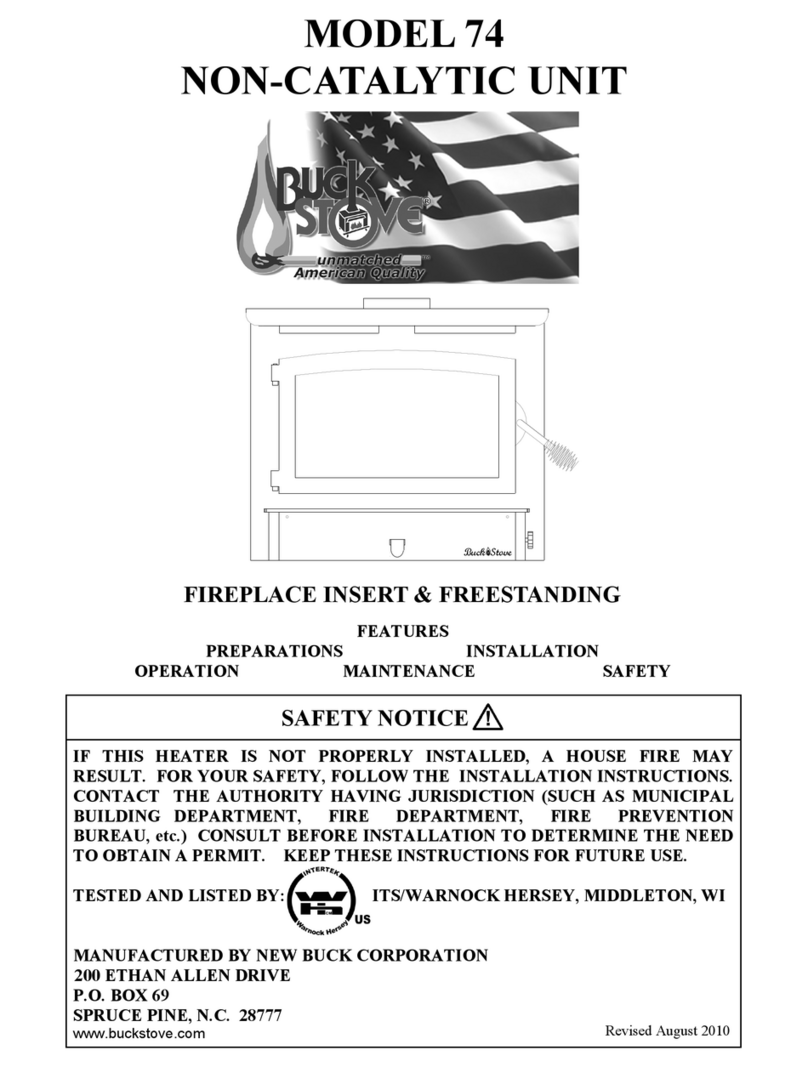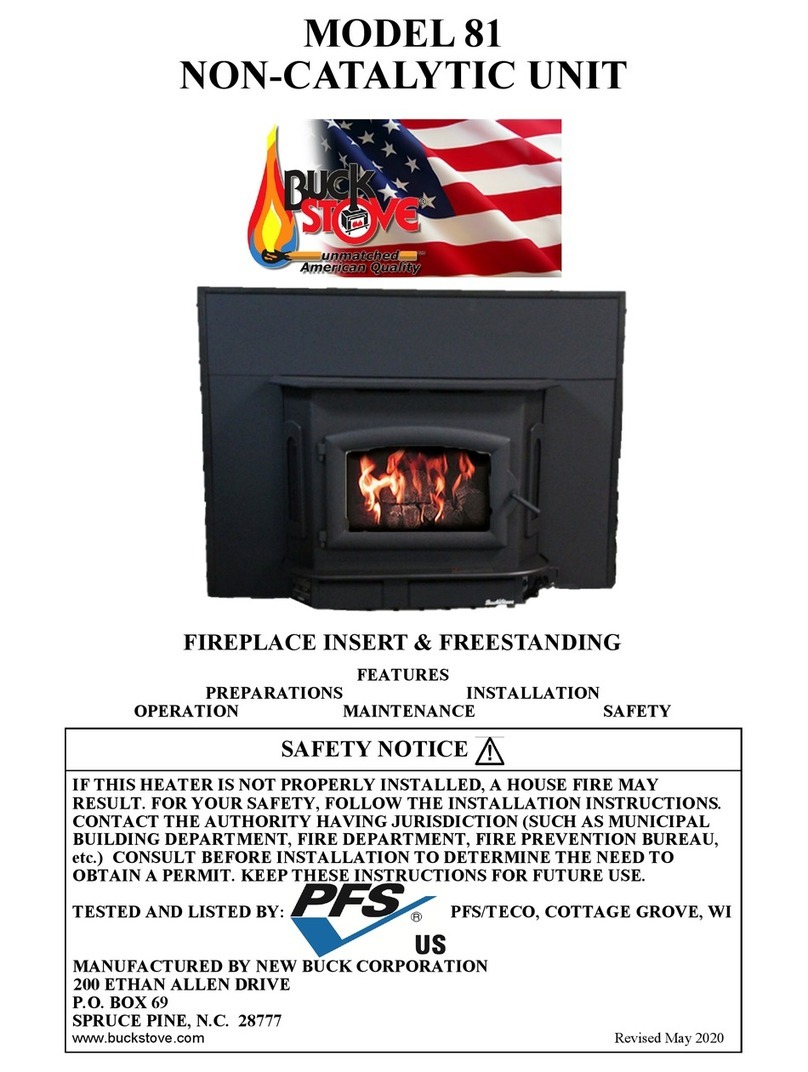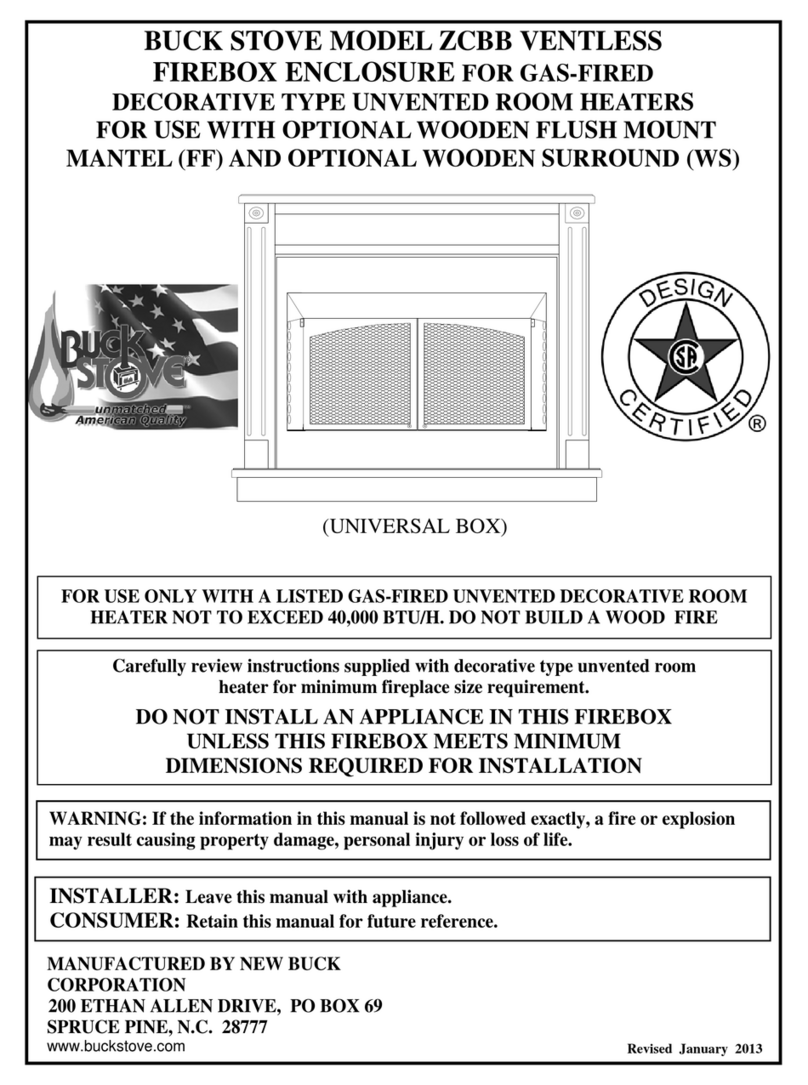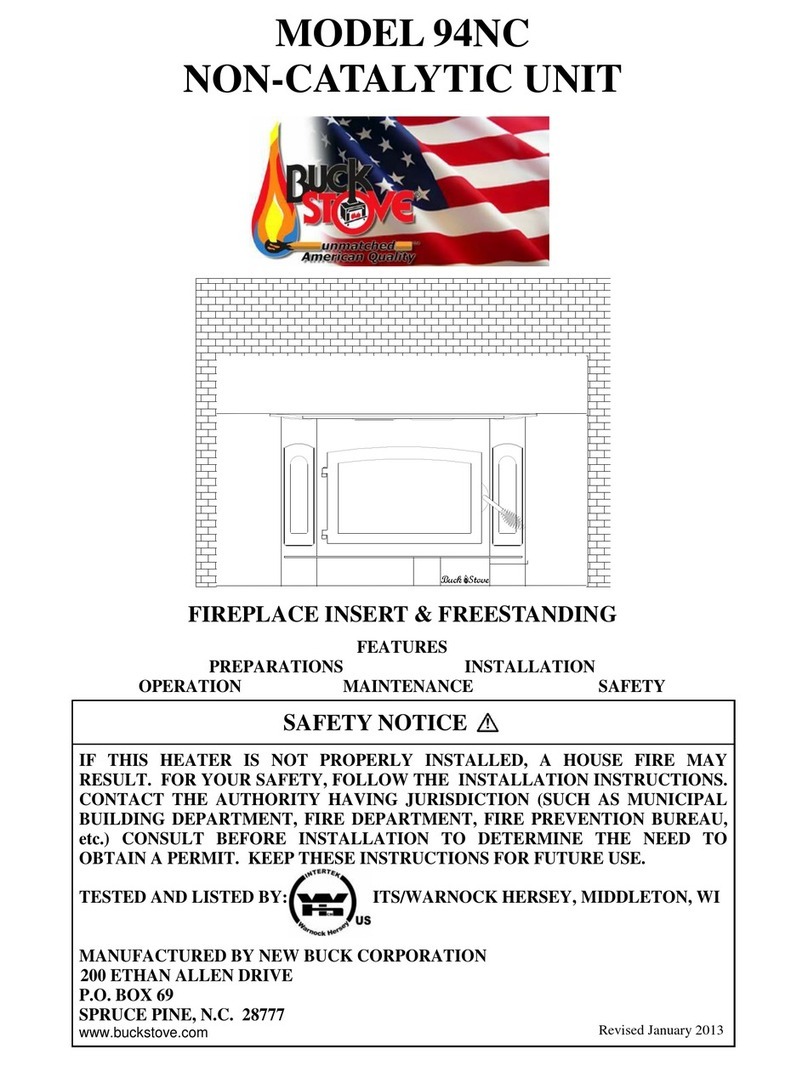TABLE OF CONTENTS
Important Instructions .................................................................................................................................................2
Stove Identification .....................................................................................................................................................3
SECTION I: Introduction............................................................................................................................................4
Type of wood and loading procedures ........................................................................................................................4
Chimney Heights ........................................................................................................................................................5
SECTION II: Masonry Insert Installation ...................................................................................................................6
Installation Preparation-Fireplace ...............................................................................................................................7
Mounting Trim Panels ................................................................................................................................................9
SECTION III: Pre-Fab Insert Installation .................................................................................................................12
SECTION IV: Residential Freestanding Installation ................................................................................................13
Floor Protection ........................................................................................................................................................14
Ceiling Exit Using Single Wall Pipe.........................................................................................................................15
Wall Exit to Metal Tee-Box .....................................................................................................................................16
Wall Exit Masonry Flue Using Single Wall Pipe......................................................................................................17
Ceiling Exit-Close Clearance....................................................................................................................................18
Clearances To Combustibles Freestanding Without Close Clearance
Shields and Using Single Wall Pipe..........................................................................................................................20
Residential / Permanently Located Manufactured Home Double Wall or Shielded Single Wall
Connector With Close Clearance Shields .................................................................................................................21
Residential / Permanently Located Manufactured Home Double Wall or Shielded Single Wall
Connector Without Close Clearance Shields ............................................................................................................22
Installation of Close Clearance Shields (Optional) ...................................................................................................23
Alcove Installation Double or Shielded Single Wall Connector With Close
Clearance Shields......................................................................................................................................................24
SECTION V: Freestanding Permanently Located Manufactured Home Installation................................................25
Out Side Air Installation ..................................................................................................................................... 26-27
SECTION VI: Wood Heater Safety ..........................................................................................................................31
SECTION VII: Operation .........................................................................................................................................32
Guide To The Different Burning Qualities of Wood ................................................................................................33
SECTION IV Maintenance:
Door Gasket Replacement.........................................................................................................................................34
Brick Layout .............................................................................................................................................................35
Secondary Air Tubes Replacement ...........................................................................................................................36
Secondary Air Tubes Identification Diagram and Tube location..............................................................................37
Optional Motor Installation................................................................................................................................. 38-39
Check Chimney.........................................................................................................................................................40
Cleaning Heater / Care of Glass................................................................................................................................41
Troubleshooting .................................................................................................................................................. 42-43
Replacement Parts.....................................................................................................................................................44
Warranty ...................................................................................................................................................................45
